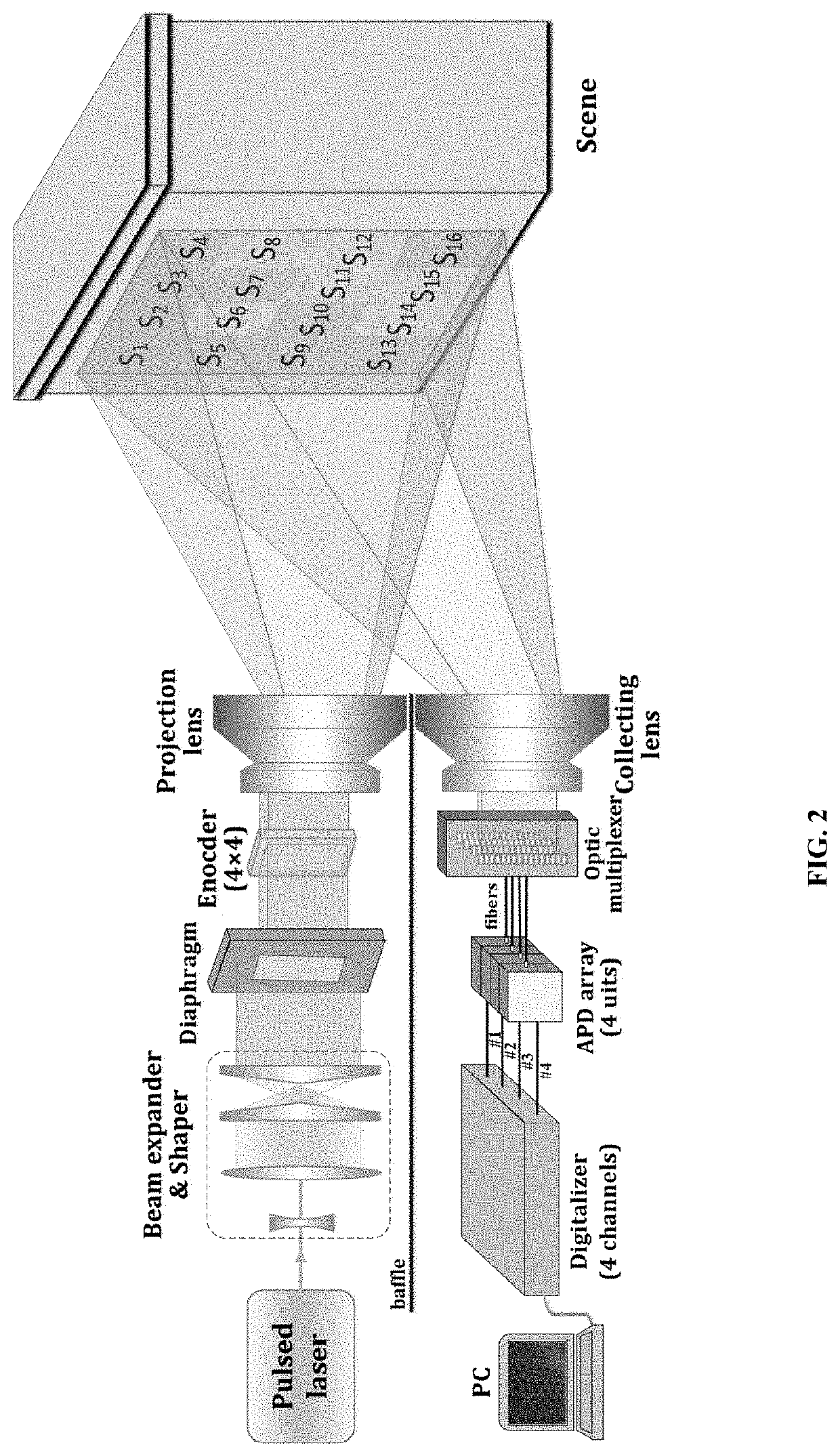CDMA-based 3D imaging method for focal plane array LIDAR
a 3d imaging and lidar technology, applied in the field of 3d imaging methods for focal plane array lidar, can solve the problems of significantly reducing range accuracy, low detection noise, and increasing size and weight, and achieve accurate range demodulation of pixels and reduce information redundancy of 22n target pixels.
- Summary
- Abstract
- Description
- Claims
- Application Information
AI Technical Summary
Benefits of technology
Problems solved by technology
Method used
Image
Examples
Embodiment Construction
[0041]A detailed description of the invention is provided as follows on the basis of the accompanying drawings.
[0042]As shown in FIG. 1, the presented CDMA-based 3D imaging method for the focal plane array LIDAR consists of three components involving emission, receiving, and signal processing. The emission process consists of laser shaping and encoding, while the receiving process executes the collection and multiplexing. The signal processing involves signal enhancement, signal demodulation, parameter extraction, and 3D image reconstruction. Compared with a conventional LIDAR imaging method, three modules including laser shaping, encoding, multiplexing, and signal demodulation are added to achieve a large FOV, low data redundancy, a high coefficient of detector utilization, and high range precision. The detailed operation is as follows. The laser is shaped into a flat-top beam and further encoded by a focal plane array encoder. For example, if the size of the encoder is 2N×2N, the ...
PUM
 Login to View More
Login to View More Abstract
Description
Claims
Application Information
 Login to View More
Login to View More - R&D
- Intellectual Property
- Life Sciences
- Materials
- Tech Scout
- Unparalleled Data Quality
- Higher Quality Content
- 60% Fewer Hallucinations
Browse by: Latest US Patents, China's latest patents, Technical Efficacy Thesaurus, Application Domain, Technology Topic, Popular Technical Reports.
© 2025 PatSnap. All rights reserved.Legal|Privacy policy|Modern Slavery Act Transparency Statement|Sitemap|About US| Contact US: help@patsnap.com



